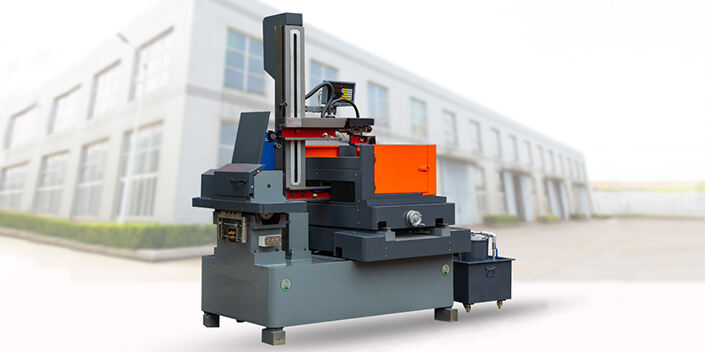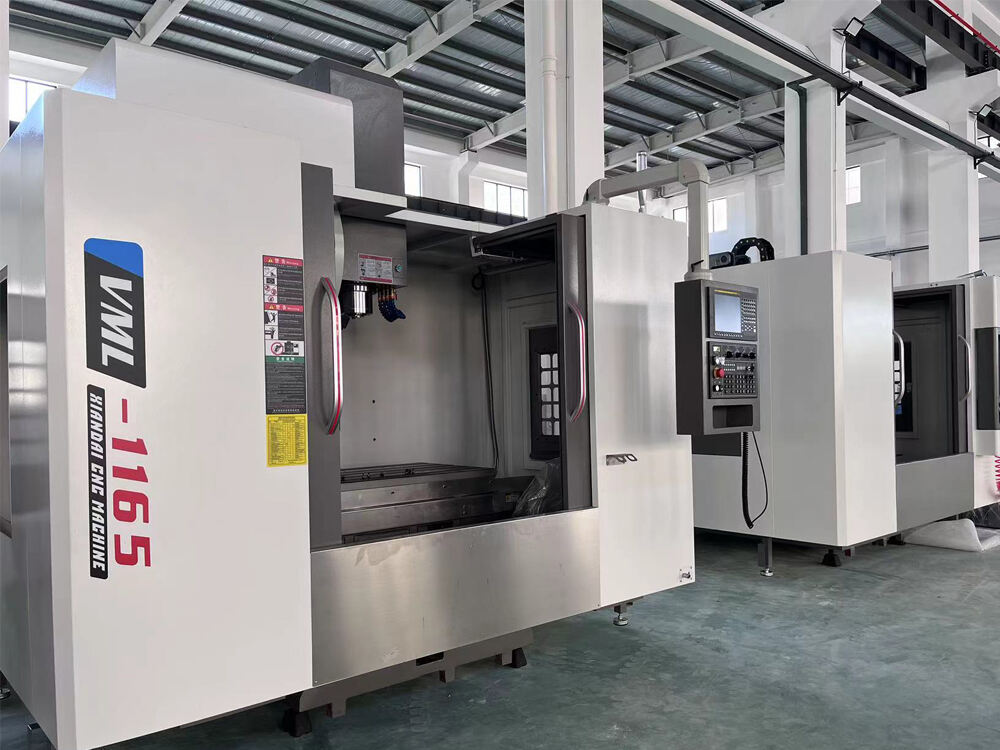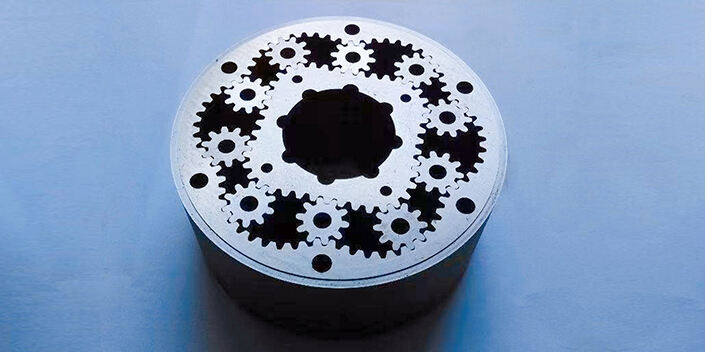Fundamentals of Wire EDM Technology in Aerospace Manufacturing
How Wire EDM Electrical Discharge Machining Works
Wire EDM works through electrical discharge machining principles, using a fine wire as the cutting tool. During operation, quick bursts of electricity jump between the wire and metal part being cut, gradually wearing away material until the desired shape remains. What makes this technique so effective for complex shapes comes down to managing that tiny space between wire and workpiece called the spark gap. Getting this right means faster cuts without sacrificing accuracy. For shops making parts for aircraft engines or other aerospace applications where even minor deviations matter, mastering these fundamentals isn't just helpful it's absolutely necessary to meet those tight tolerances required in aviation manufacturing.
Material Compatibility: Cutting Titanium, Inconel, and Superalloys
Wire EDM, or electrical discharge machining, works really well when cutting through tough stuff like titanium, Inconel, and those tricky superalloys that are so common in aerospace parts. Since EDM doesn't actually touch the material while cutting, there's almost no mechanical stress involved, which keeps those high performance materials from getting damaged during processing. Manufacturers need to understand how heat affects these materials if they want to tweak their EDM settings properly and get good results. The fact that EDM can handle these challenging materials means aerospace companies can push the boundaries of what's possible with their components, meeting those tough quality specs without compromising on performance requirements.
Precision Tolerances for Aerospace Standards
The aerospace industry requires incredibly tight tolerances, sometimes down to the micrometer level. Wire EDM machines stand out here, reaching tolerances around +/- 0.002 inches. That kind of precision matters a lot when making critical parts for aircraft or spacecraft. These machines also follow important aerospace standards like AS9100. Meeting those standards isn't just paperwork it actually makes sure everything stays safe and maintains high quality throughout production. For companies trying to keep up with what the aerospace sector demands, sticking to these standards means wire EDM remains one of the best options available today.
Critical Applications of Wire EDM Machines in Aerospace
Engine Components: Turbine Blades and Fuel Systems
Wire EDM plays a critical role in aerospace manufacturing, especially when it comes to making complex parts for engines including turbine blades and various fuel system components. The shapes required for these parts are extremely complicated, designed specifically to improve how air flows around them and boost overall engine efficiency something Wire EDM does exceptionally well. The level of detail this process achieves matters a lot because small errors in fuel system components can lead to major problems down the line. What really sets Wire EDM apart though is its capability to cut through tough materials such as titanium and different types of superalloys. This becomes absolutely necessary for parts that must withstand intense heat and pressure inside operating engines where failure isn't an option at all.
Structural Parts: Lightweight Frames and Brackets
Weight reduction remains a major challenge in aerospace manufacturing where strength cannot be sacrificed, and Wire EDM stands out for making those lightweight structural parts we see everywhere from frames to brackets. The precision of this machining method really helps improve those strength to weight ratios, which makes planes fly better overall. What's interesting too is how little waste gets generated during the cutting process thanks to its accuracy, something that fits right into what manufacturers are trying to achieve these days with sustainability initiatives. Beyond just saving money on materials though, this approach actually helps the whole industry move closer to its green targets since there's simply less scrap flying around after production runs.
Avionics and Electrical Systems
Wire EDM has become really important for making parts used in avionics and electrical systems these days since those industries need extreme precision and complex shapes. Manufacturers rely on it heavily when creating things like printed circuit boards and connectors housing that go into aircraft electronics. These components require very fine electrical connections packed into small spaces. The aviation sector keeps pushing for denser circuitry while shrinking overall size, which makes Wire EDM especially valuable because it can cut incredibly detailed parts with tight tolerances. For instance, engineers working on next generation flight control systems find that Wire EDM allows them to maintain all required functions even as components get smaller and more densely packed together on board.
Advantages of Wire EDM Over Conventional Machining
Handling Complex Geometries and Thin-Walled Designs
Wire EDM stands out when it comes to creating those really complicated shapes that regular machining just can't pull off. Most traditional methods hit walls when dealing with intricate parts, especially ones with tight tolerances or unusual angles. Wire EDM cuts through all that with its remarkable precision and knack for handling tiny details that other tools miss completely. The process uses a super thin wire as an electrode, which allows manufacturers to cut delicate features without weakening the actual component itself. For industries like aerospace, this matters a lot since aircraft components need these kinds of complex designs to function properly under extreme conditions. Many jet engine parts and satellite components rely on this exact kind of precision cutting to meet both performance requirements and safety regulations that leave no room for error.
Reduced Need for Secondary Processing
Wire EDM's remarkable precision cuts down on the need for extra processing steps, saving manufacturers time and money in their operations. Traditional machining methods usually require several follow-up operations just to get the right finish, while wire EDM creates parts with excellent surface quality right from the start. The effect on manufacturing efficiency is pretty significant actually. Production lines run smoother when there's less back and forth between machines. Quality stays consistent batch after batch too, something that matters a lot in sectors like aerospace engineering where even tiny deviations can cause major problems during flight tests or component assembly.
Minimizing Material Stress in Heat-Sensitive Alloys
Wire EDM cuts down on thermal effects, something really important for those heat-sensitive alloys we see all over the aerospace industry. Regular machining methods tend to throw off extra heat that can warp materials and leave behind stress points. Wire EDM works differently since there's no actual contact between tool and workpiece, so none of those problems happen. The material stays intact with all its original characteristics preserved. That matters a lot because aerospace parts need to last through some pretty harsh situations while maintaining their structural strength. Think about how critical this becomes when components are subjected to extreme temperatures and pressures at high altitudes where failure isn't an option.
Innovations Driving Wire EDM Efficiency in Aerospace
Automation and Lights-Out Manufacturing Capabilities
Wire EDM automation really takes efficiency and precision to another level, mainly because it cuts down on those pesky human errors while cranking up how much gets done in a day. What this means is that machines can run on their own now, which has led to this thing called lights-out manufacturing where factories keep running even when nobody's around for hours at a time. The aerospace industry loves this kind of setup since they need both massive quantities and razor sharp accuracy all the time. When companies automate their wire EDM operations, they see real improvements in how things get made. For instance, parts that used to take weeks to produce might come out in days instead, and every single piece meets those tight tolerances required for aircraft components. This makes life so much easier for manufacturers dealing with the tough requirements of building planes and spacecraft.
Integration with CAD/CAM for Custom Aerospace Parts
When combining CAD and CAM systems with wire EDM technology, manufacturers gain some serious advantages in making custom parts for aerospace applications. The way these technologies work together lets engineers tackle really complicated designs that would be tough or impossible otherwise, opening up possibilities for creating specialized components that meet strict aerospace requirements. One major benefit is faster prototyping cycles, which cuts down on time spent developing new aircraft parts during critical phases of production. Beyond just better design options, this tech combo actually improves how machines cut through materials too. Shops report saving both time and money because the optimized cutting paths reduce waste and machine downtime, something that matters a lot when dealing with expensive aerospace alloys.
Advanced Wire Threading and Break Detection Systems
Wire EDM machines today come equipped with smart threading systems that make setup faster and more reliable than ever before. When paired with break detection tech, these upgrades help keep production running smoothly without those frustrating equipment breakdowns that cost so much in downtime. For companies making parts for planes and spacecraft, this kind of reliability translates directly into better bottom lines. The time saved during setup alone makes these investments worth it over months of operation. Most shops find that once they integrate these features into their workflow, they start seeing improvements almost immediately across multiple aspects of their manufacturing process.





